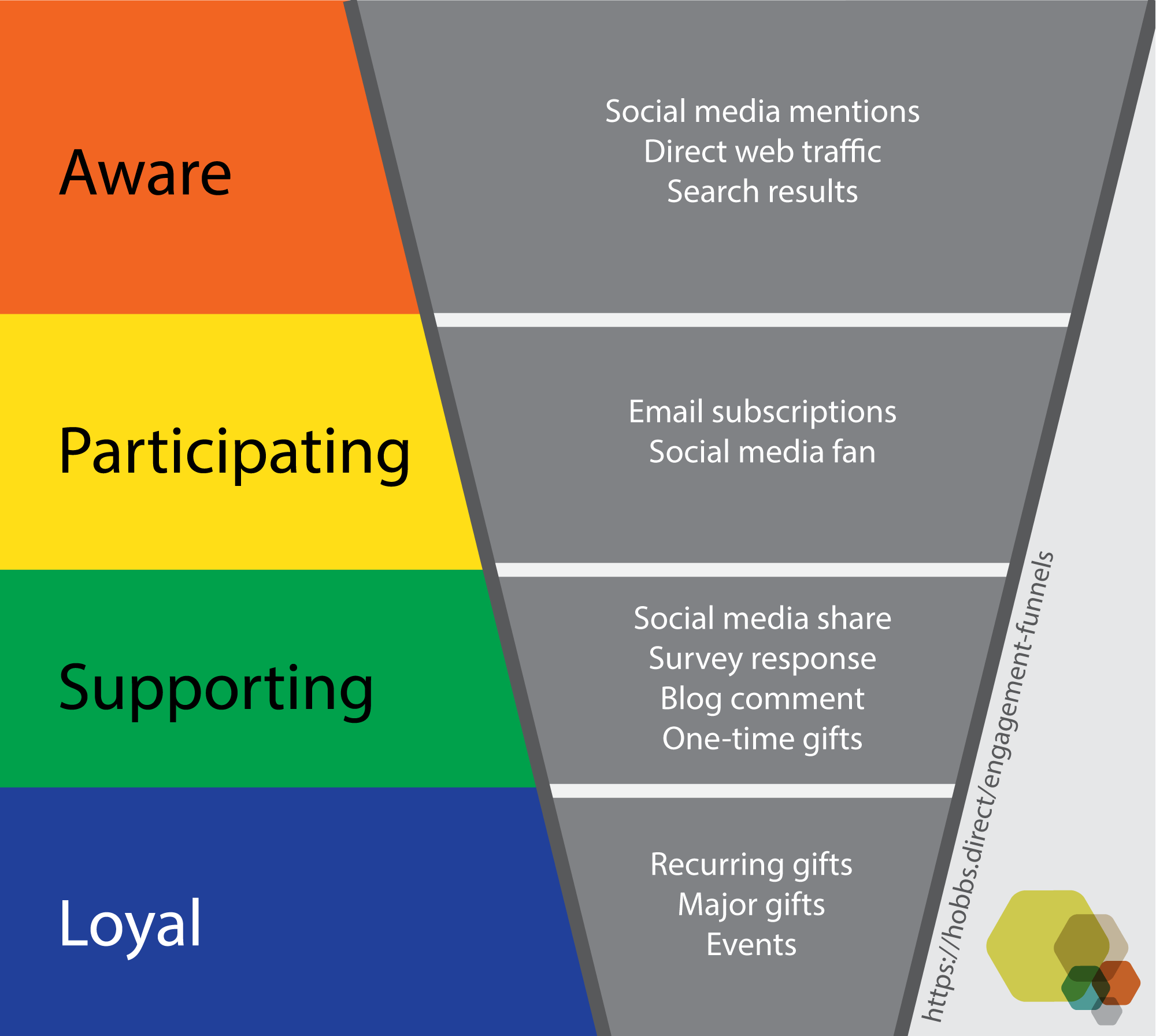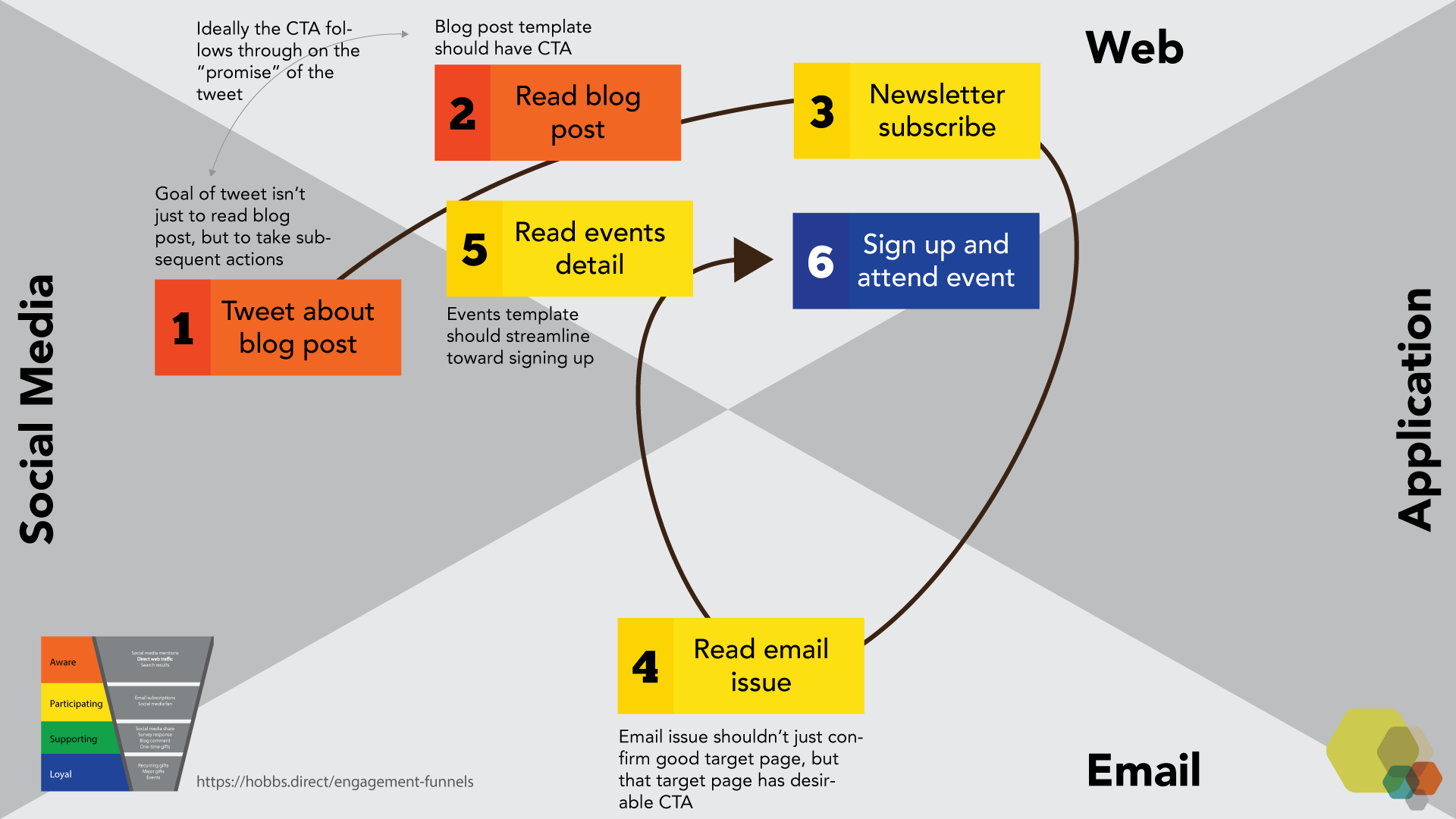Key Points
- Optimize for relationships and not just single-visit transactions
- Make sure you have the content to push visitors toward deeper engagement
- Drive toward business goals
Relationships, not transactions (and definitely not just information sharing!)
Are you optimizing your web presence (not just your main web site) for transactions, or relationships? Given the immediacy of the web, especially in how easy it is to do stuff, it’s easy to think short term. For instance, you may do something that increases the percentage of visits that people buy your main product (optimizing the single transaction checkout funnel). This clearly is important, but I would encourage you to think longer term, not just concentrating on the single transaction, but what you are attempting to accomplish with site visitors over the long term.
If you consider a car rental company, they want you to rent cars with them. But it’s clearly not enough to just make it easy to rent from you, since other factors (like price) may mean that people don’t even consider your company for a particular transaction (when a competitor has a cheaper price). So rental car companies have loyalty programs that make it more likely to consider them and use them. The point is that this process isn’t just about optimizing single transactions but creating an affinity and predisposition to your offerings.
If you are stuck in the mode of approaching your site solely as a means of providing information, then a next step may be to simply move to conversion on particular pages (providing email address for a download for example). This at least moves you toward thinking in a more action-oriented manner about your site.
Define stages in deepening engagement
In addition to services companies (like the car rental company), this table gives a flavor of how other types of organizations, for example research and membership organizations, might think about their engagement funnel:
| Engagement | Research | Services | Membership |
|---|---|---|---|
| Level 1 | Aware | Aware | Aware |
| Level 2 | Share | Purchase | Join |
| Level 3 | Collaborate | Loyalty program | Participate |
| Level 4 | Affect change | Strong preference | Lead |
Each organization will have a different engagement funnel (for example research organizations have very different audiences and goals). The above table is an oversimplification, but hopefully it shows the type of variety between even types of sites.
The funnel
It's a funnel since at each subsequent stage of engagement we have fewer and fewer people at that level (just like a sales funnel or conversion funnel). We want to push people to the next level. One way of visualizing the funnel is to associate each step with activities that indicate someone is at that level:

Multi-visit and Multi-Channel
Rarely will someone go from not knowing about you to be a loyal, large donor in a single visit. Furthermore, obviously we want to provide value on an ongoing basis beyond a single visit anyway. So we need to be optimizing multiple interactions.
This interaction may be cross-channel as well. This is especially true of the interplay between web and email:

Always plan for deepening engagement, but also try to discourage going backwards
We want to do three things:
Most important: Attempt to deepen engagement (green arrows below).
Encourage people to at least stay where they are at (blue arrows below).
Don't go backwards in the engagement stage that they are currently at (red arrows).

Sometimes it makes sense to enable pathways that skip one level (the dotted green arrows).
During big change you want to think systematically, about how to broadly ensure that your digital presence will deepen engagement down the stages you define. On an ongoing basis, ensure that when you make changes you are attempting to streamline deepening engagement.